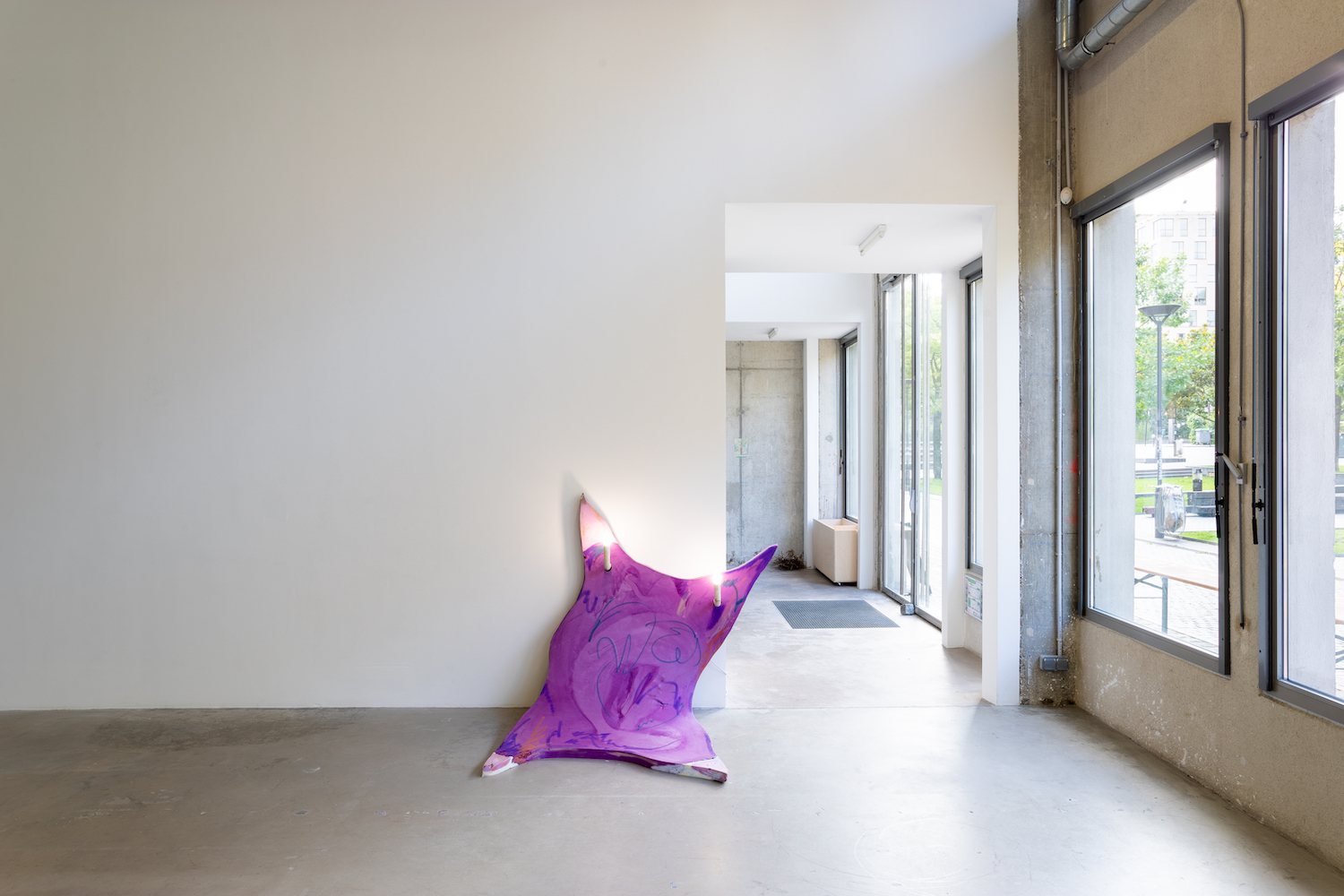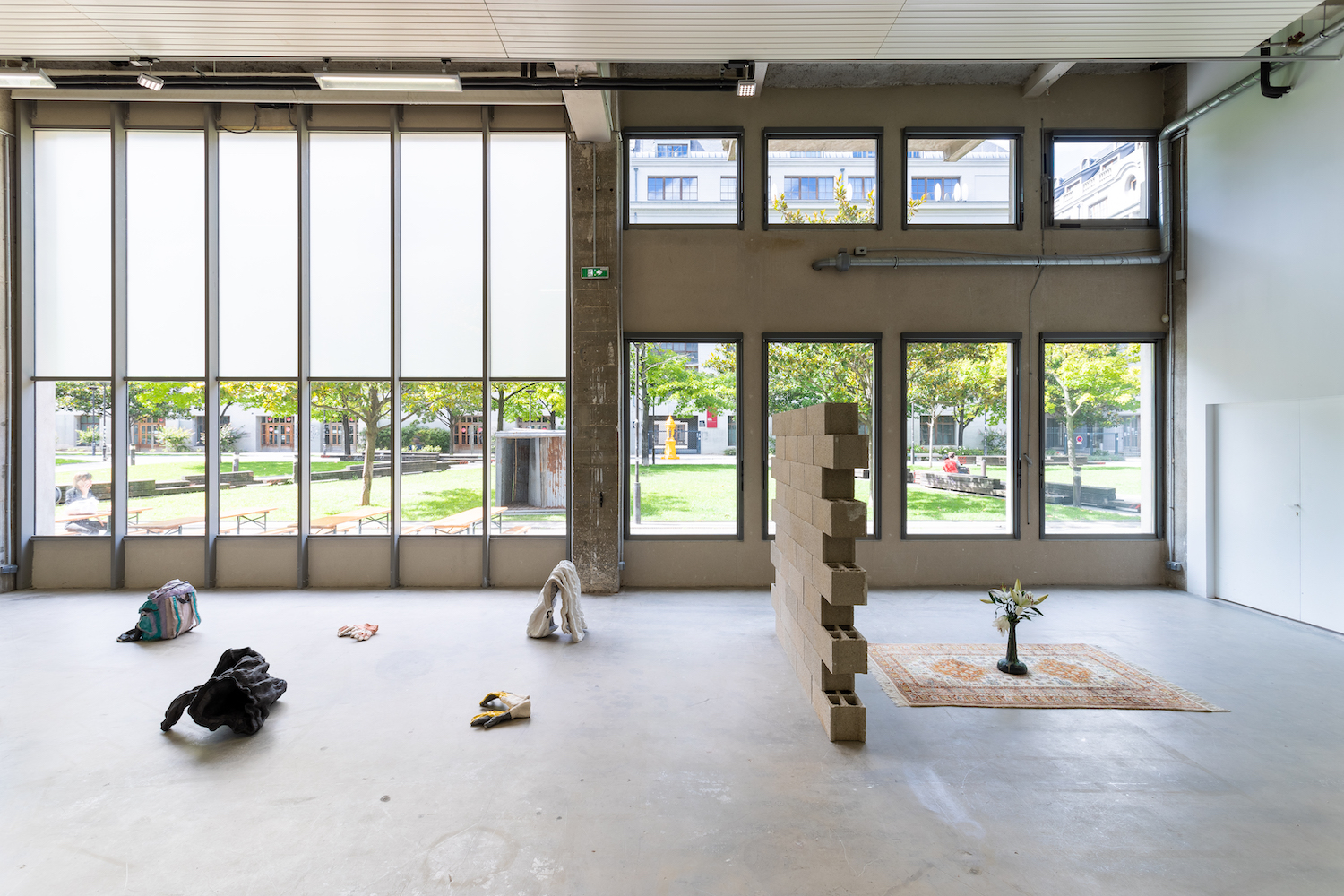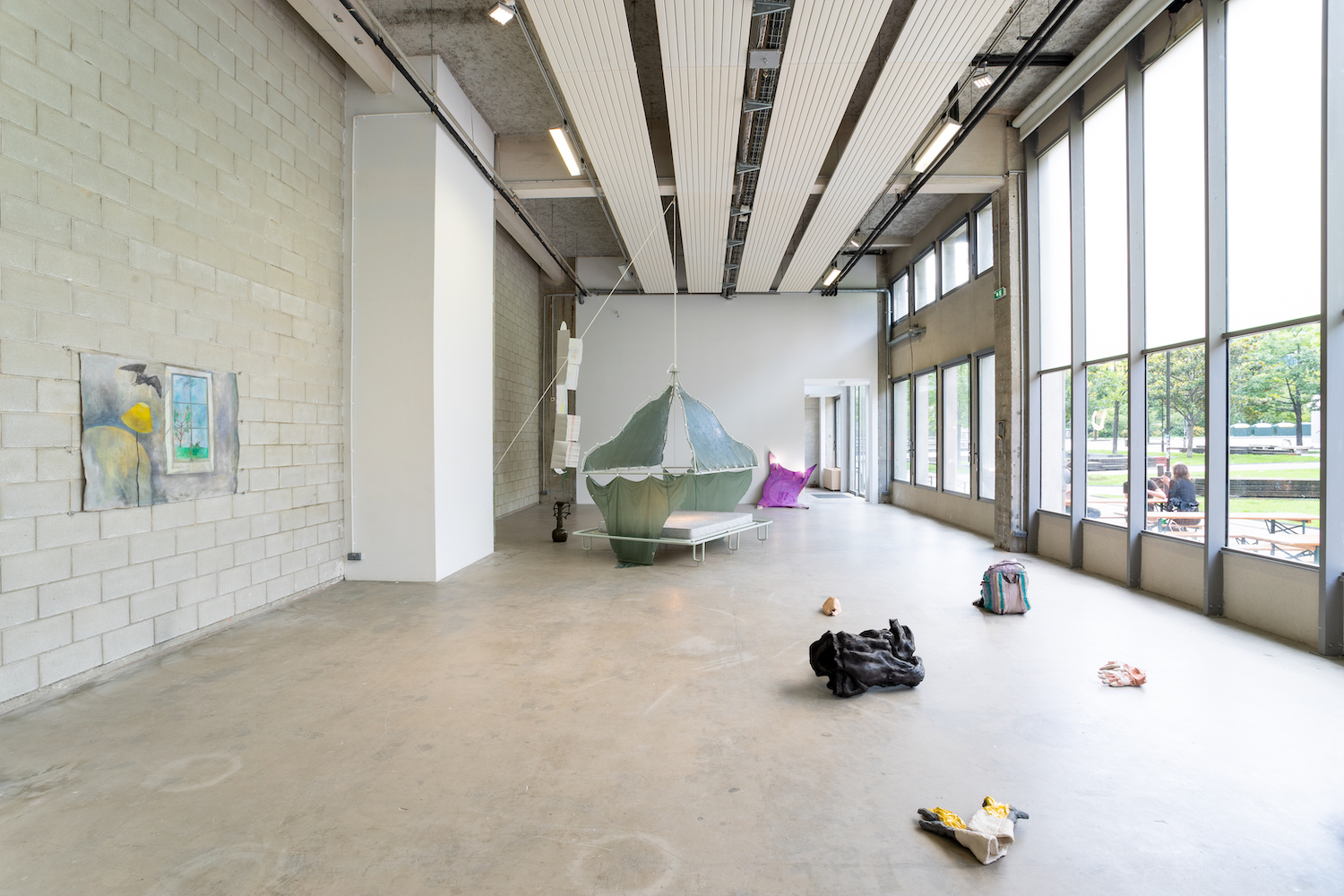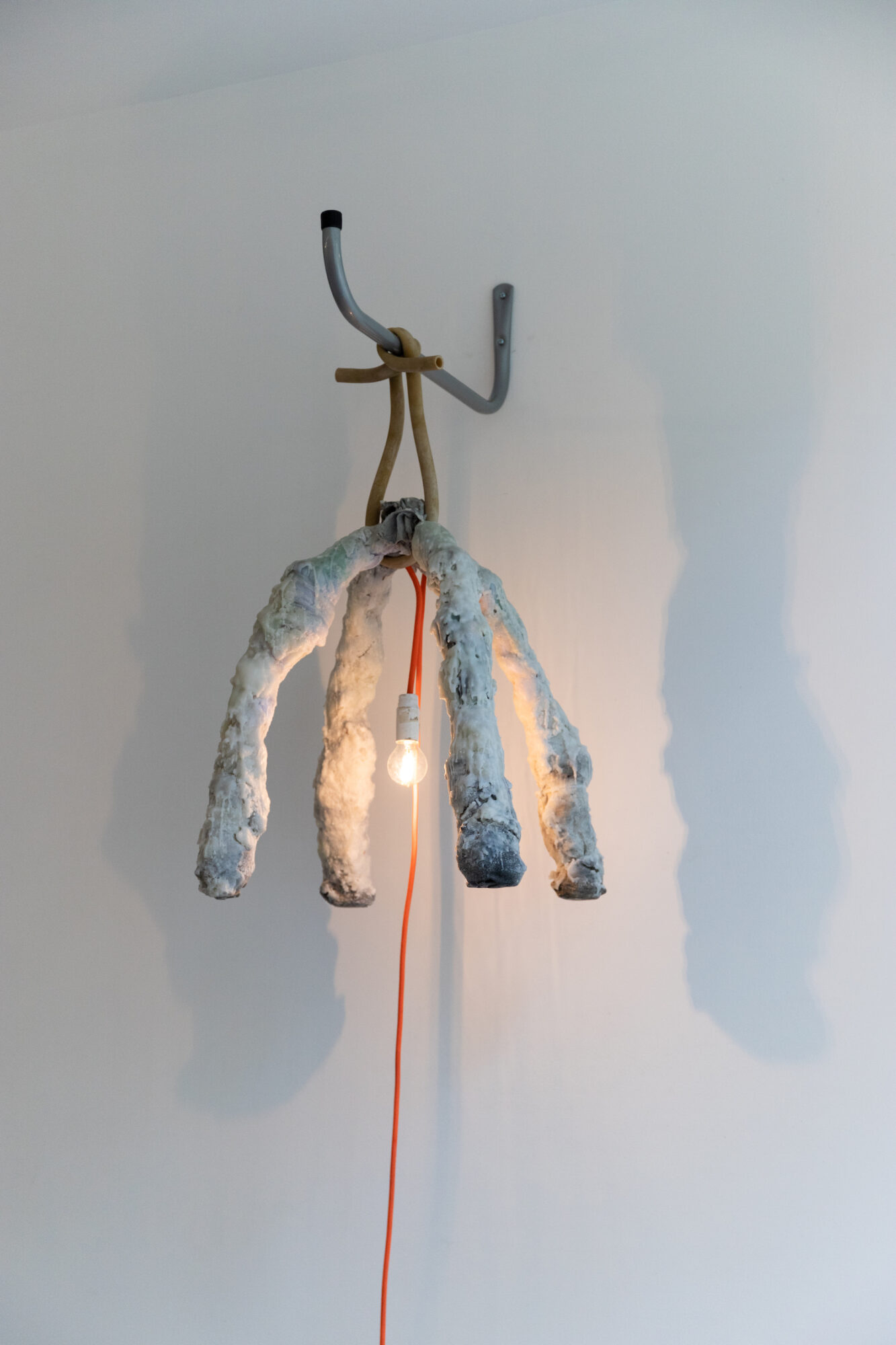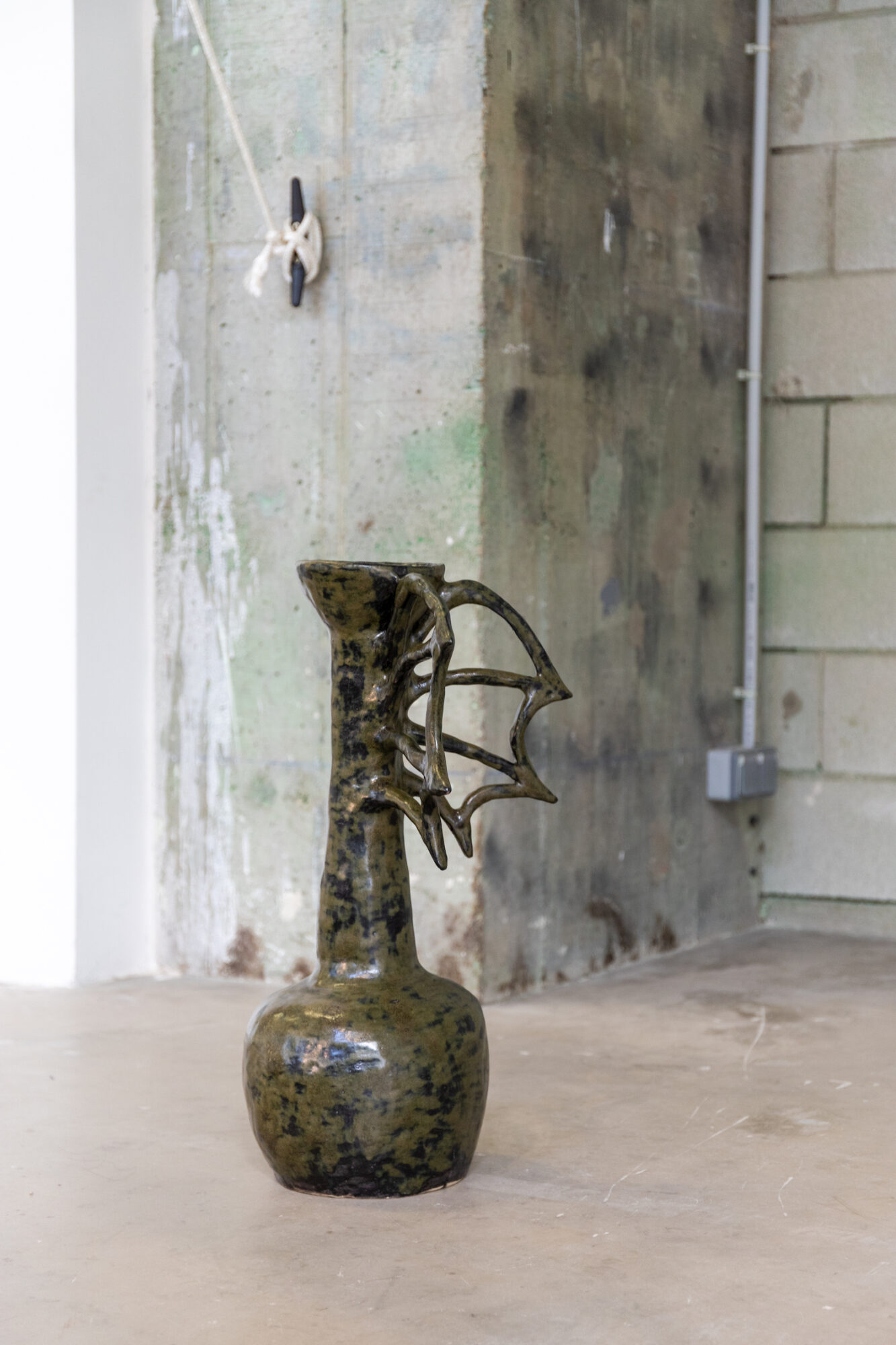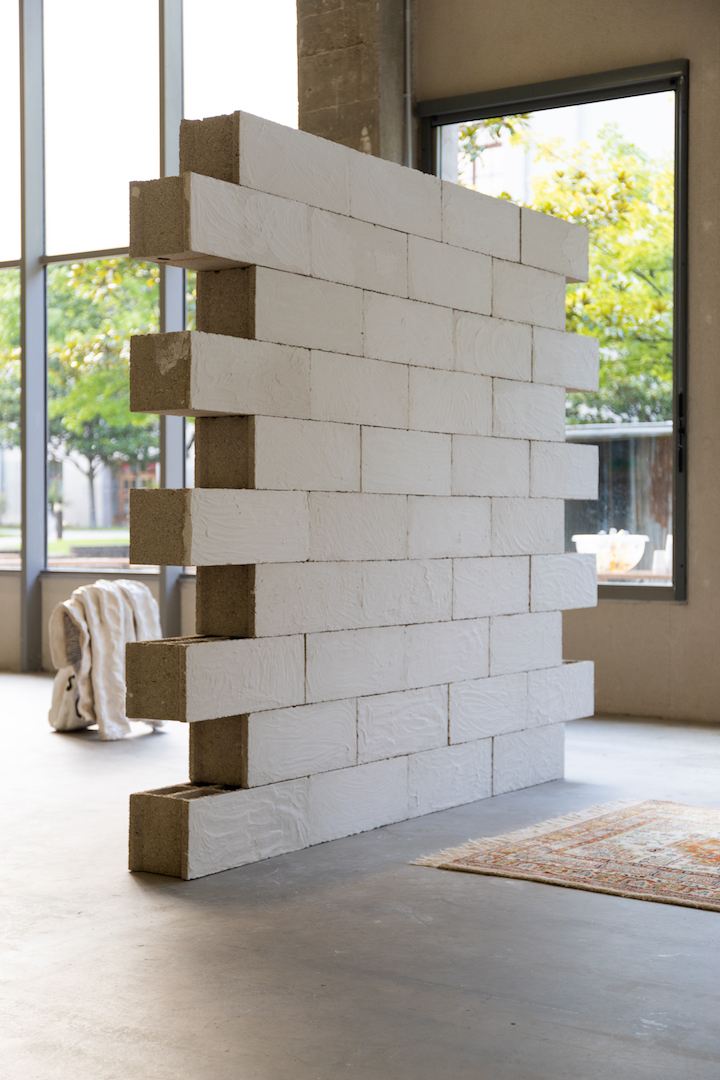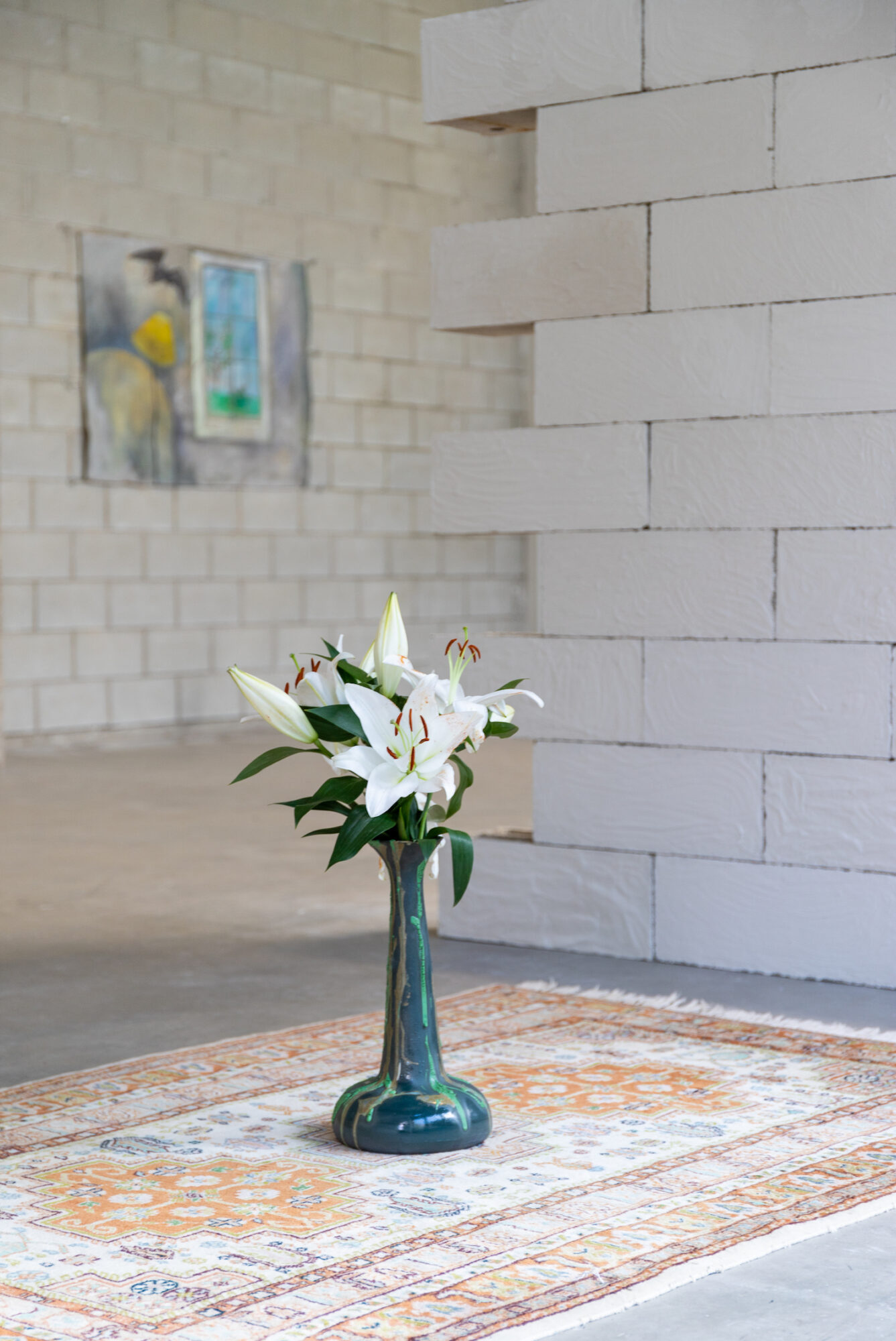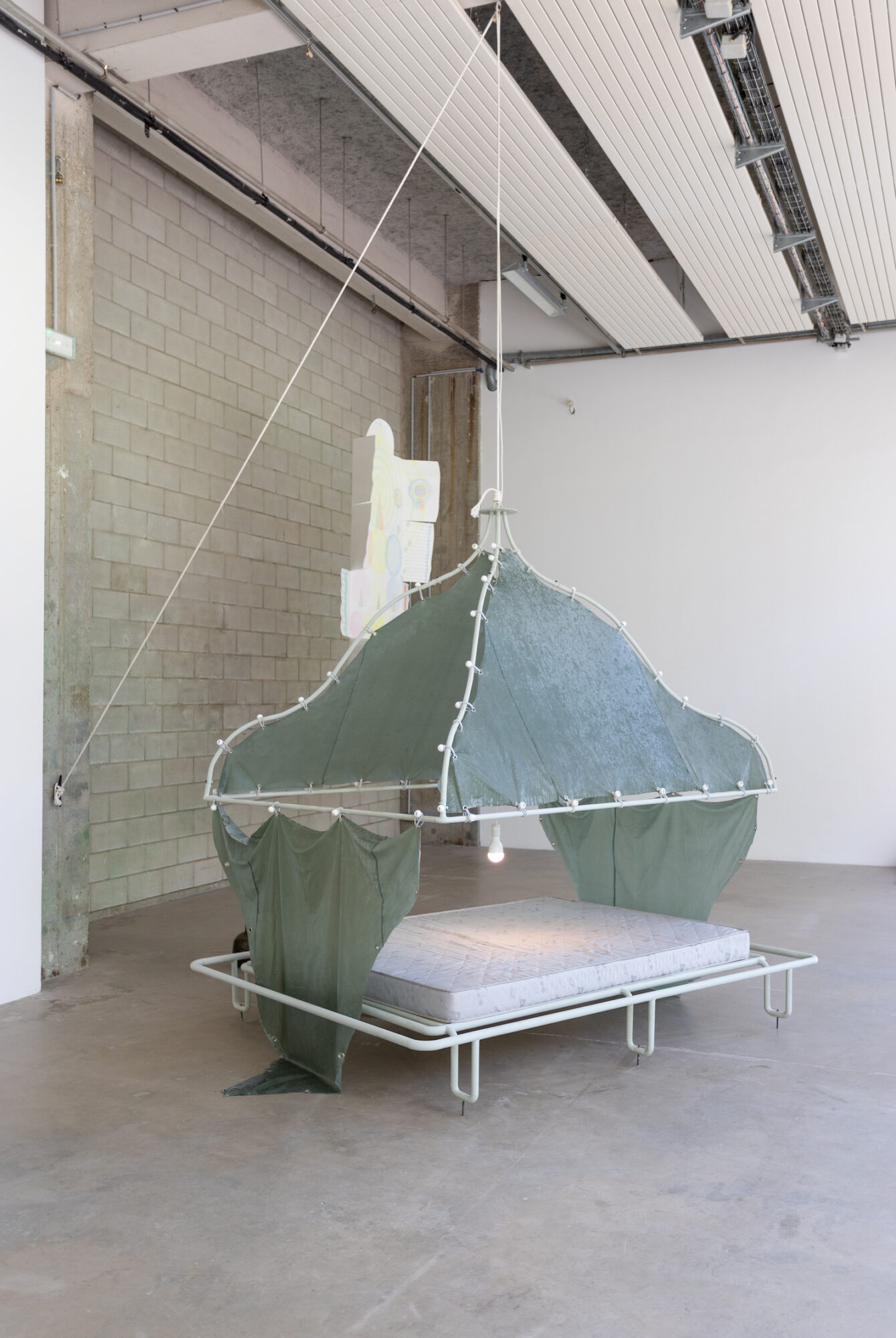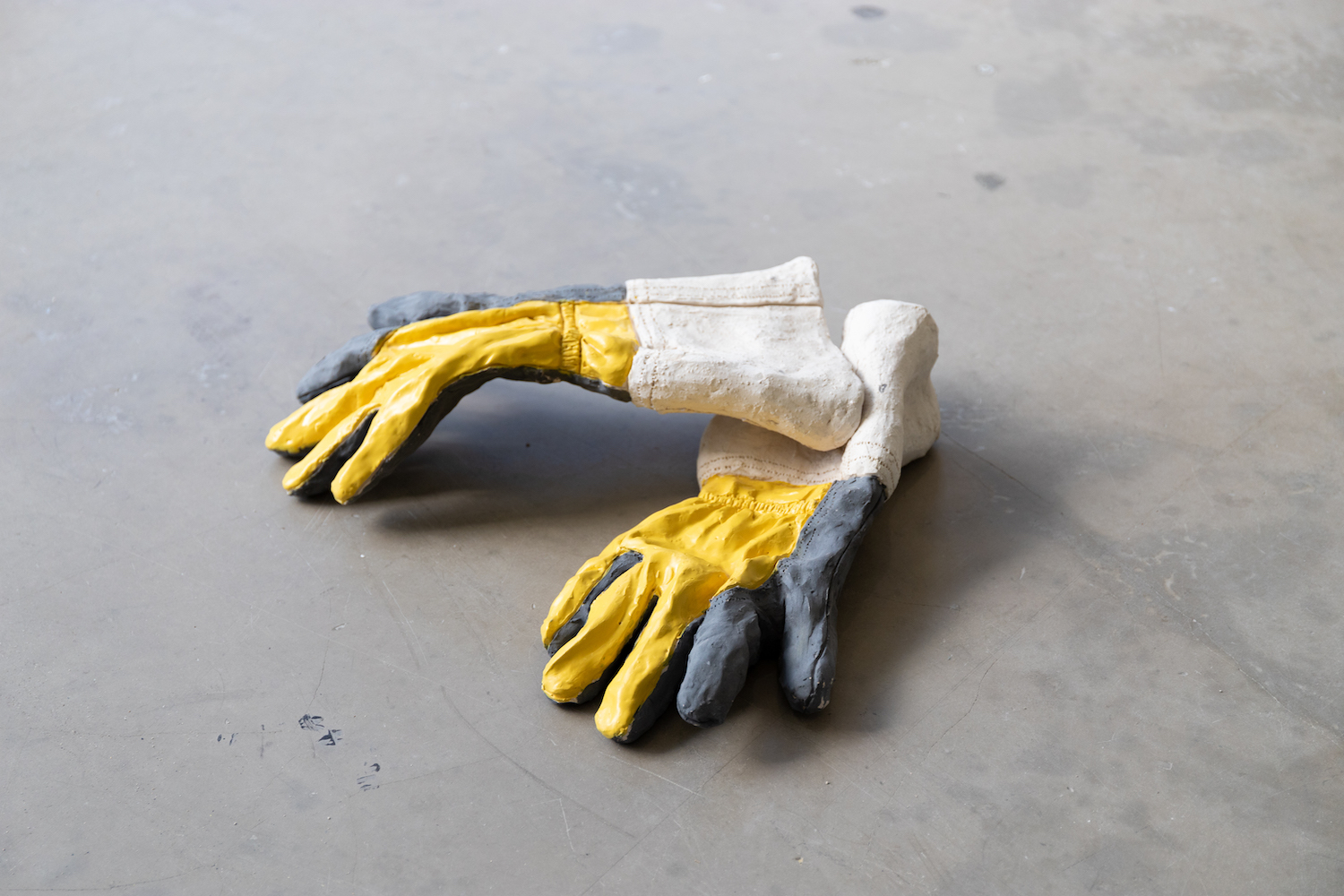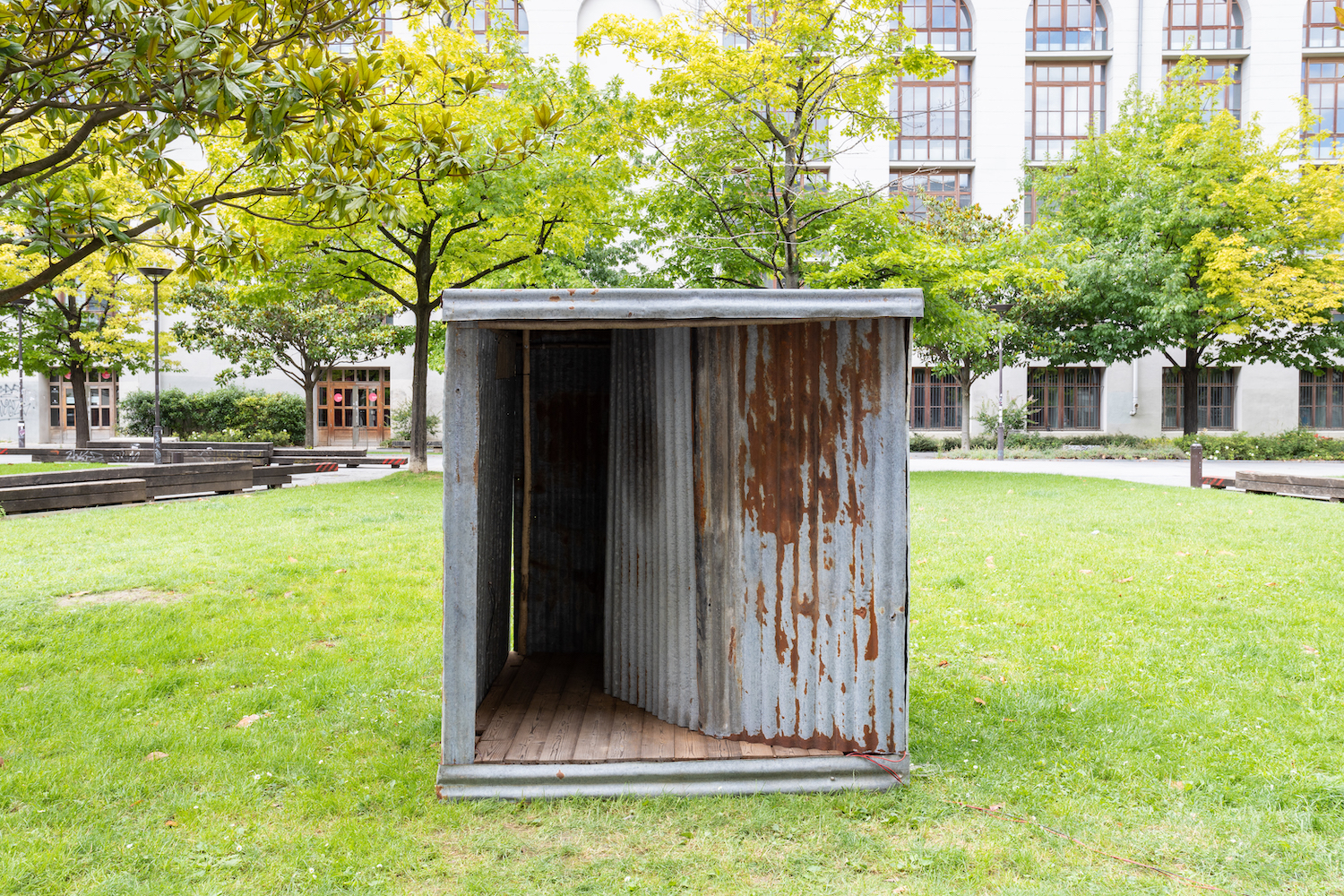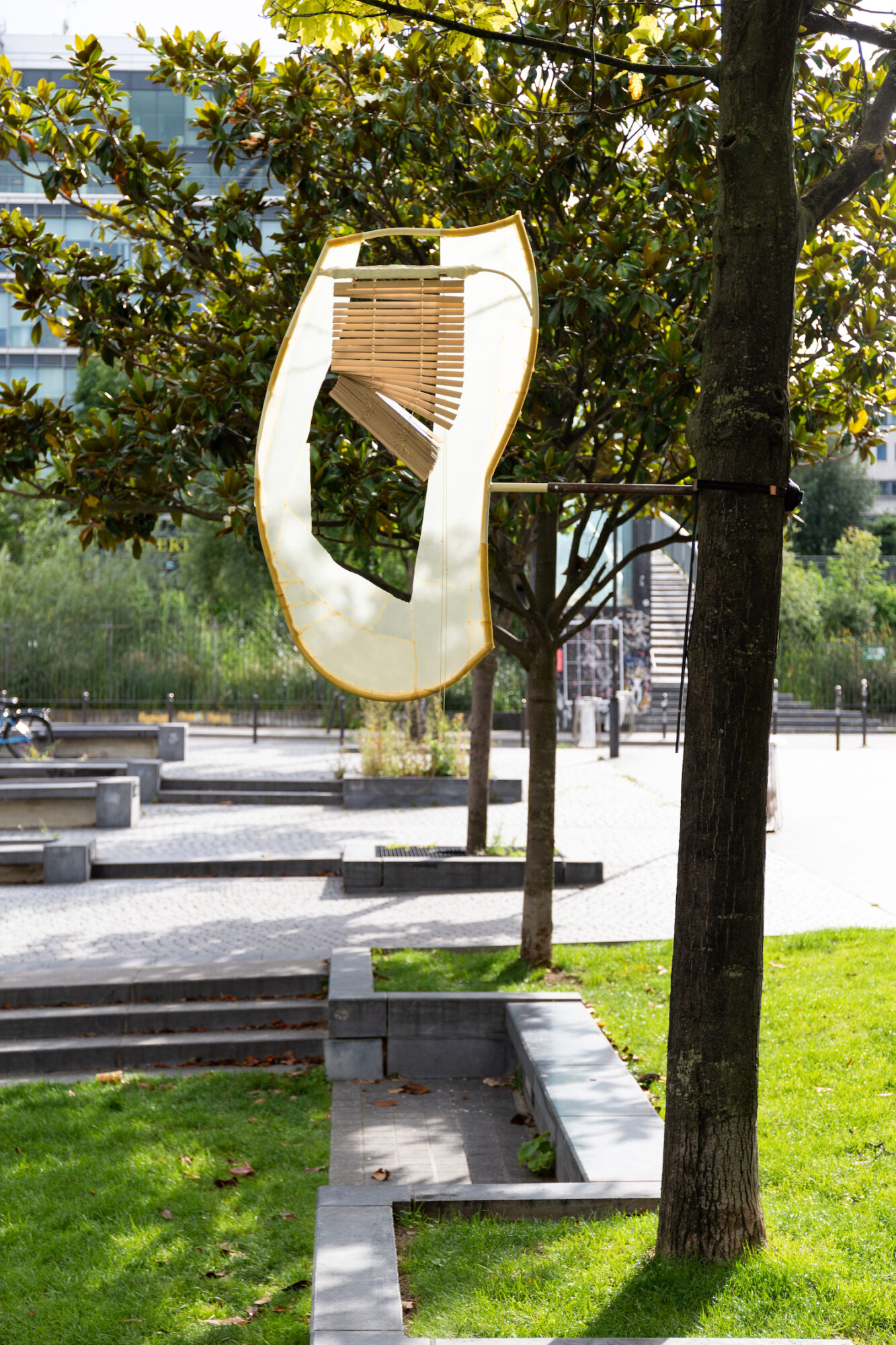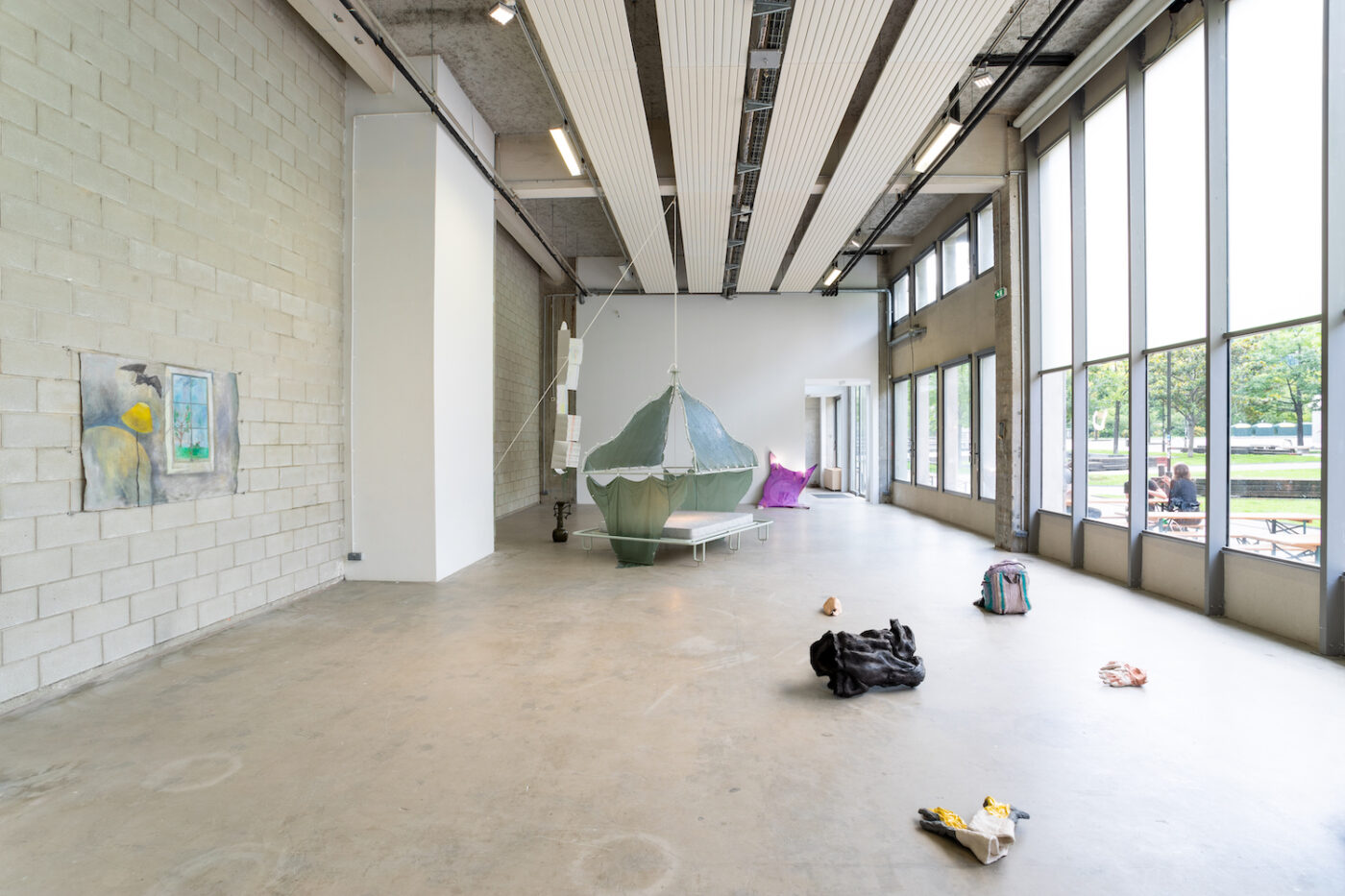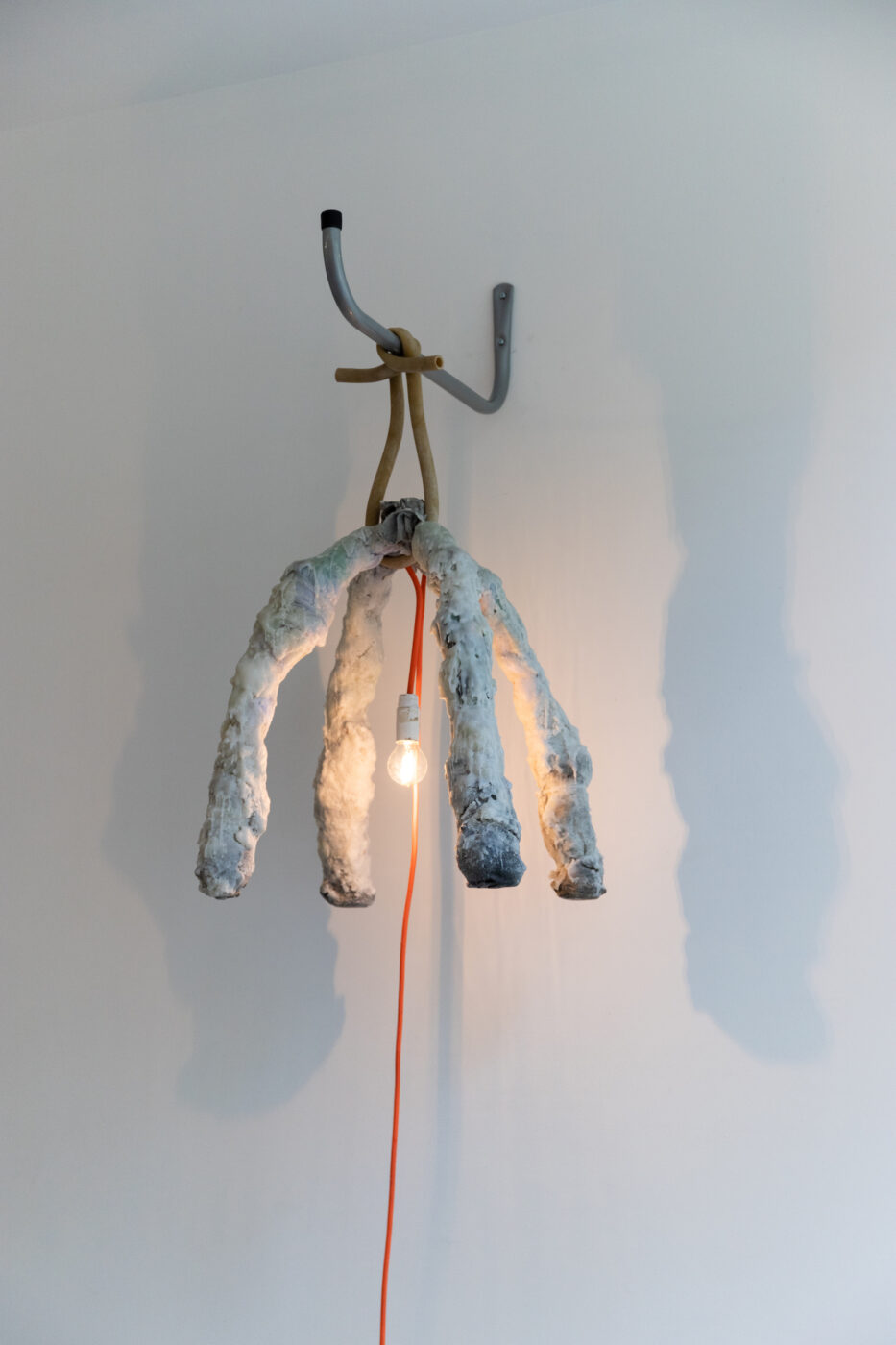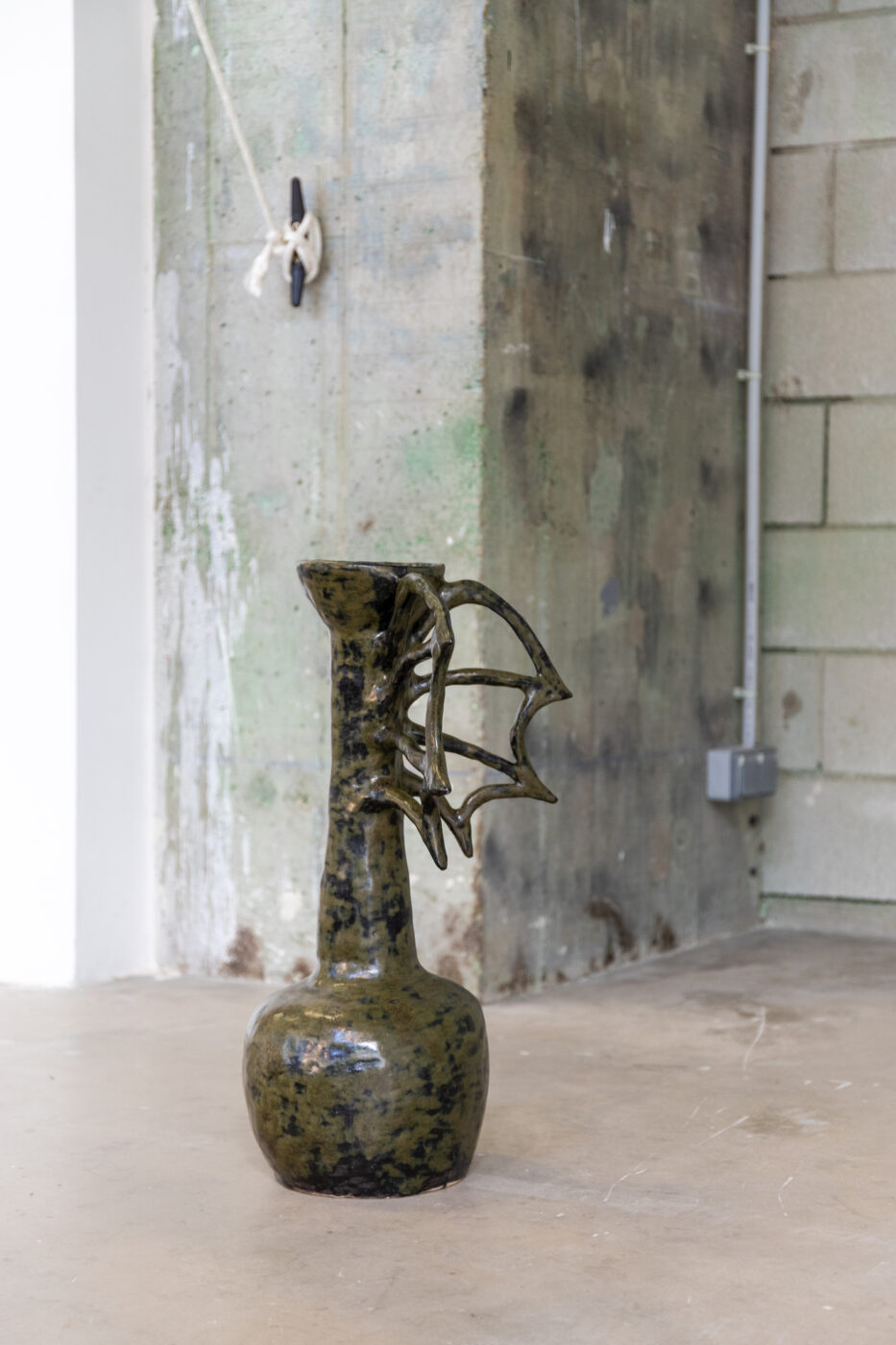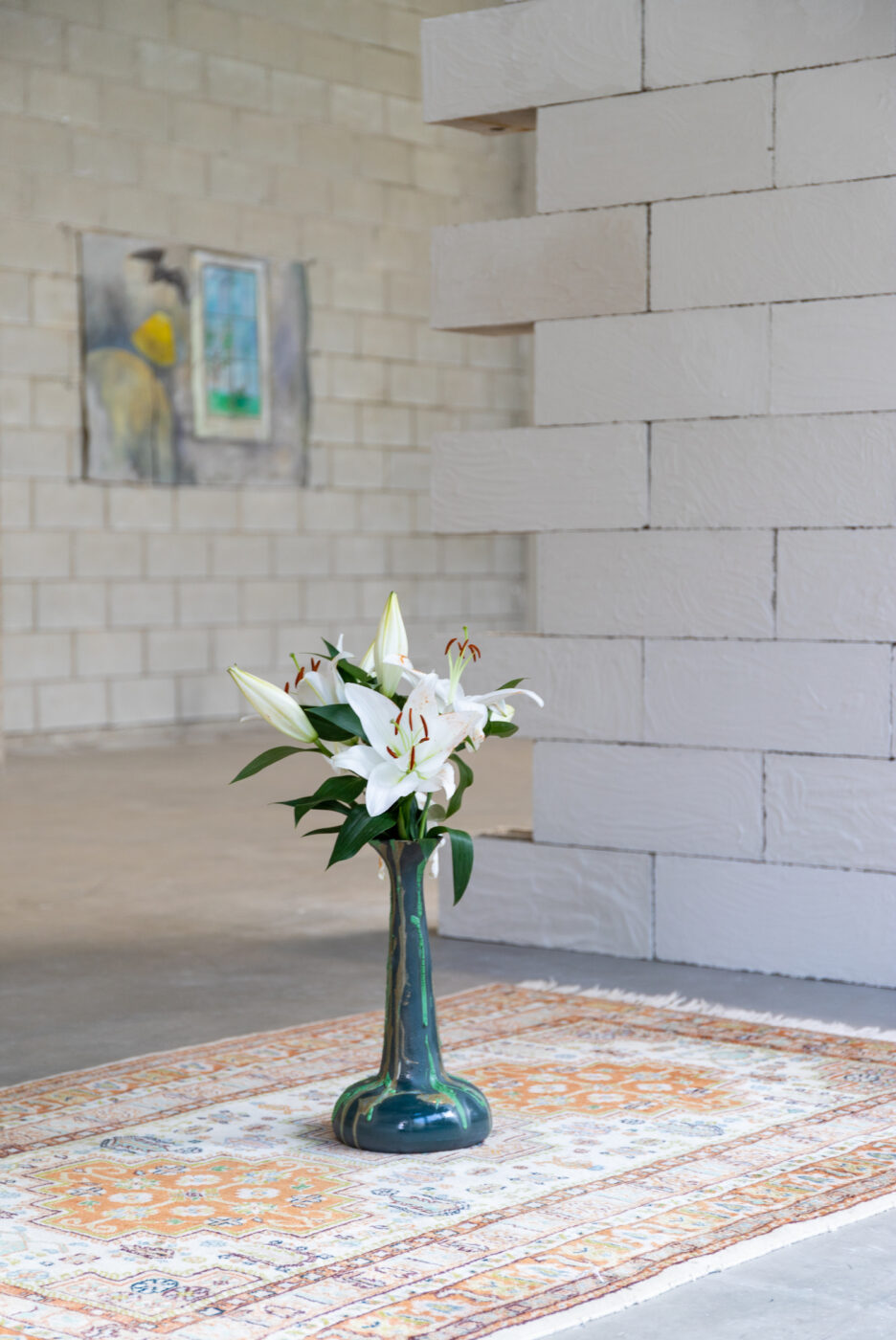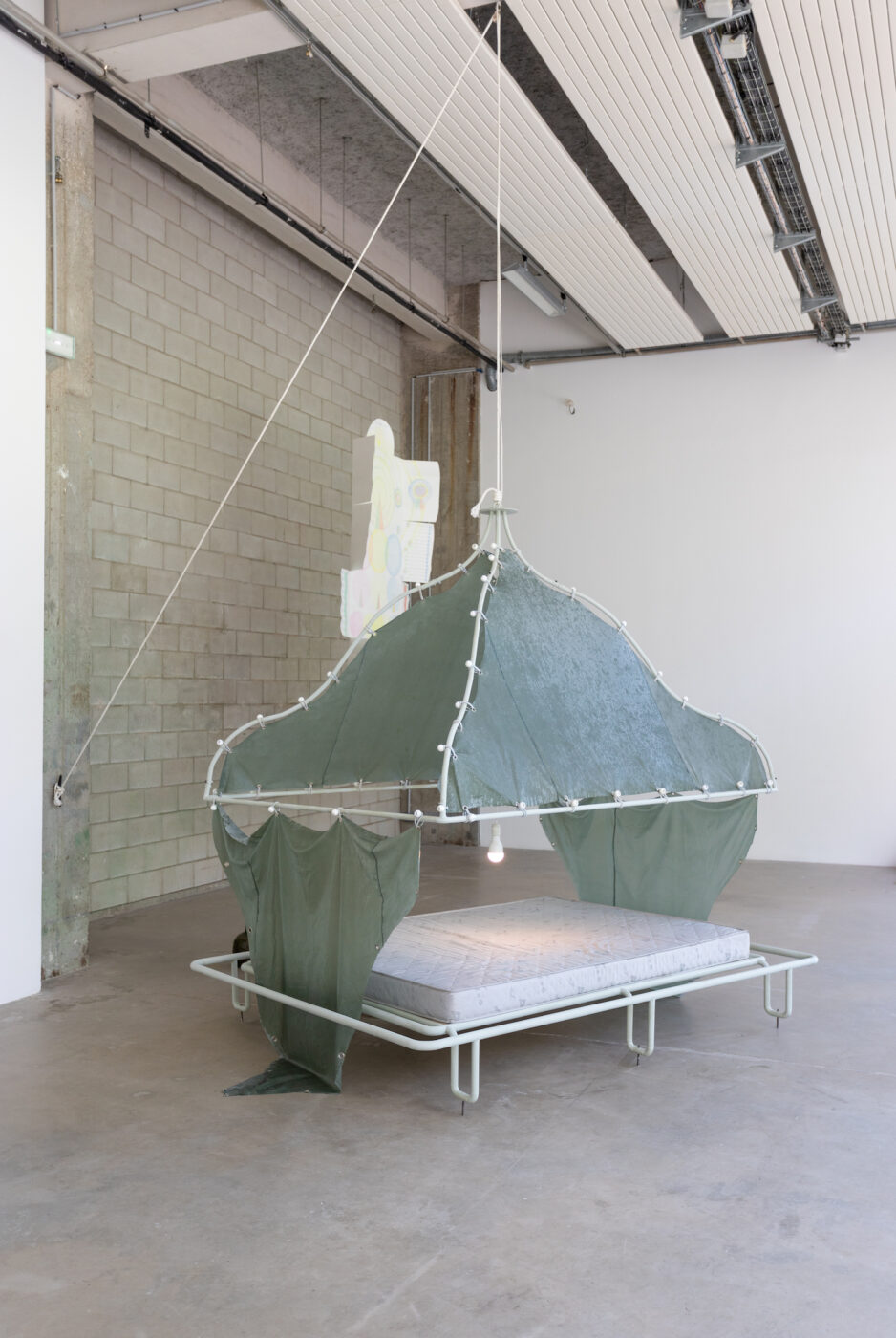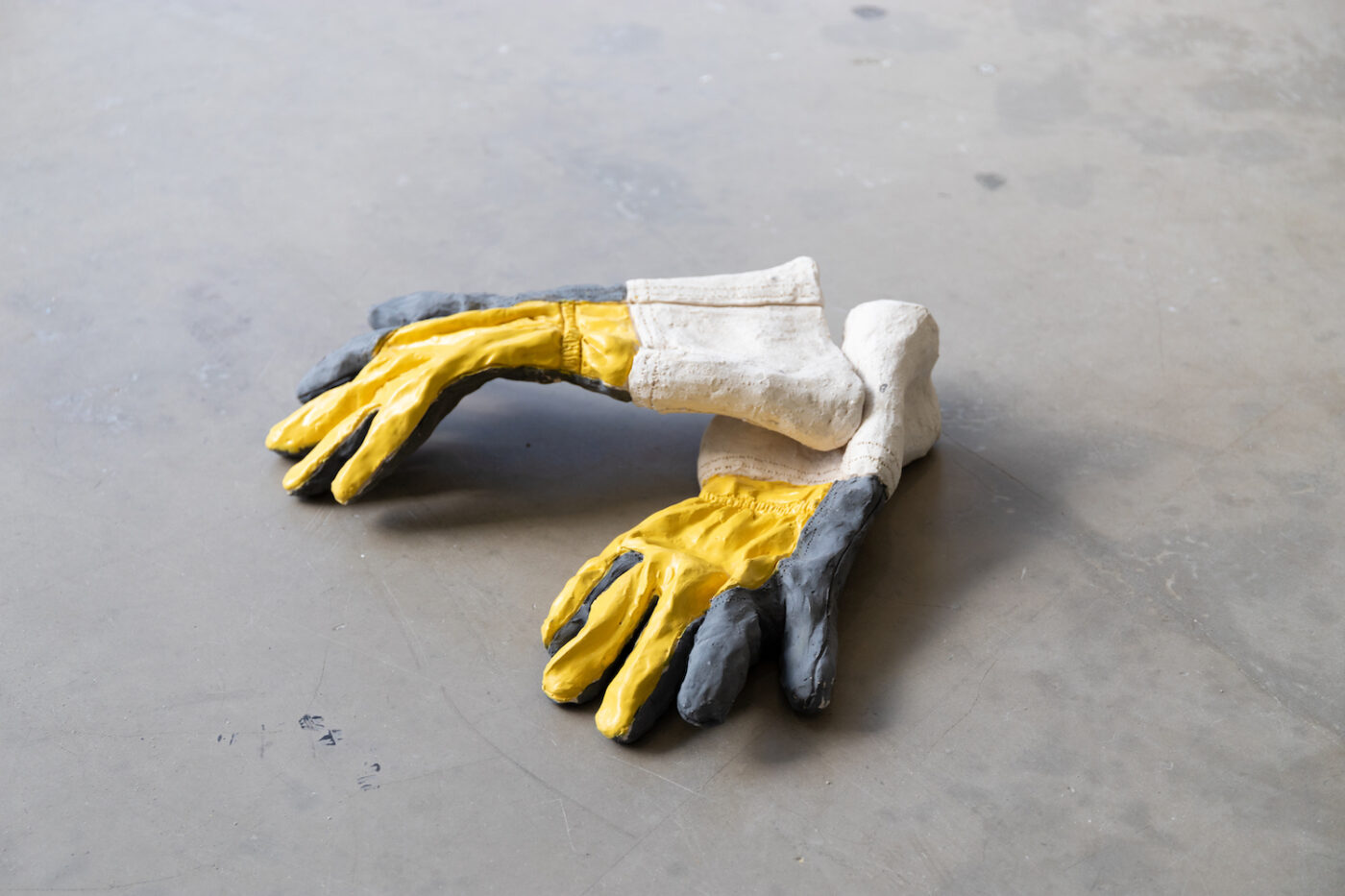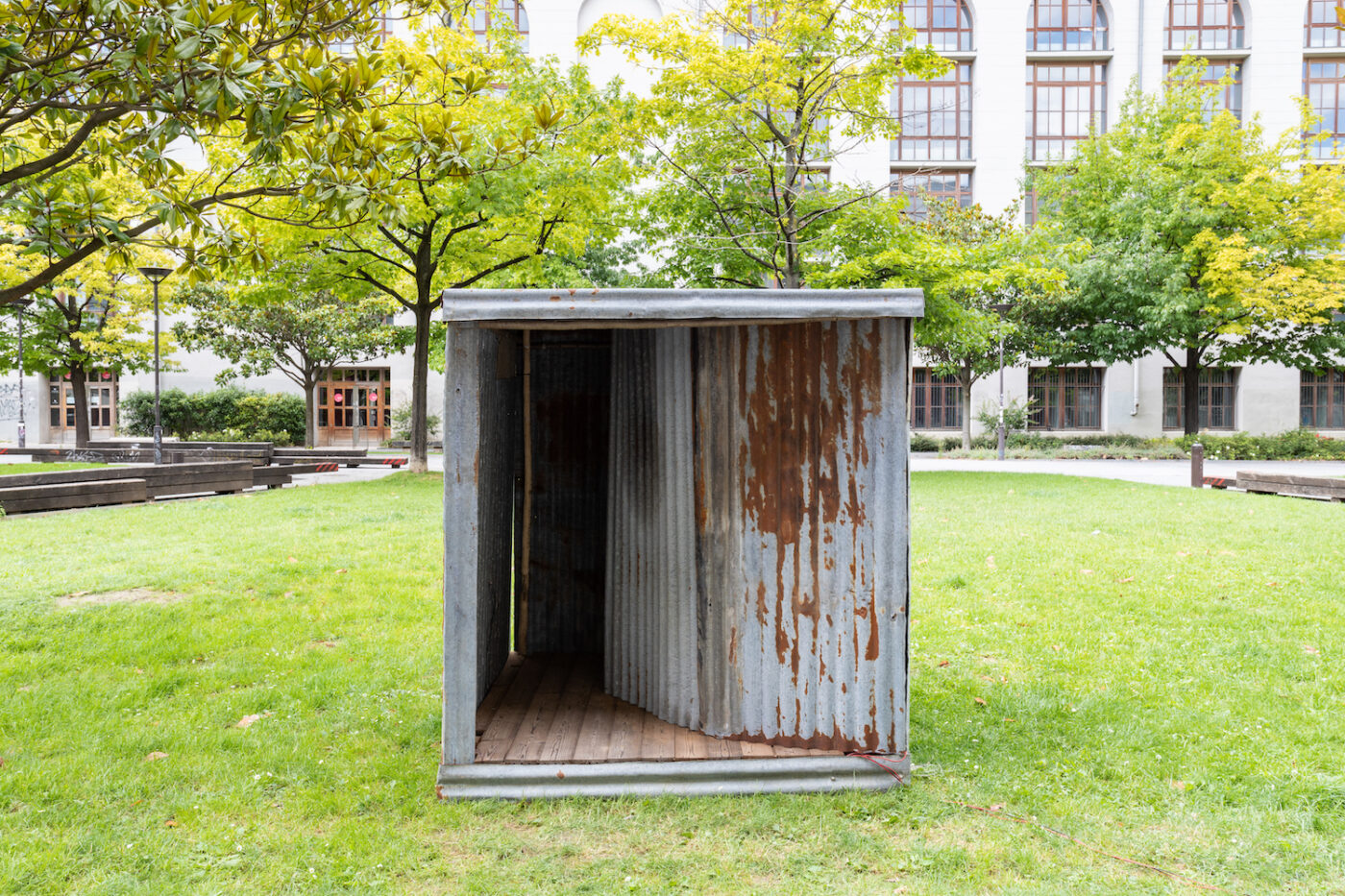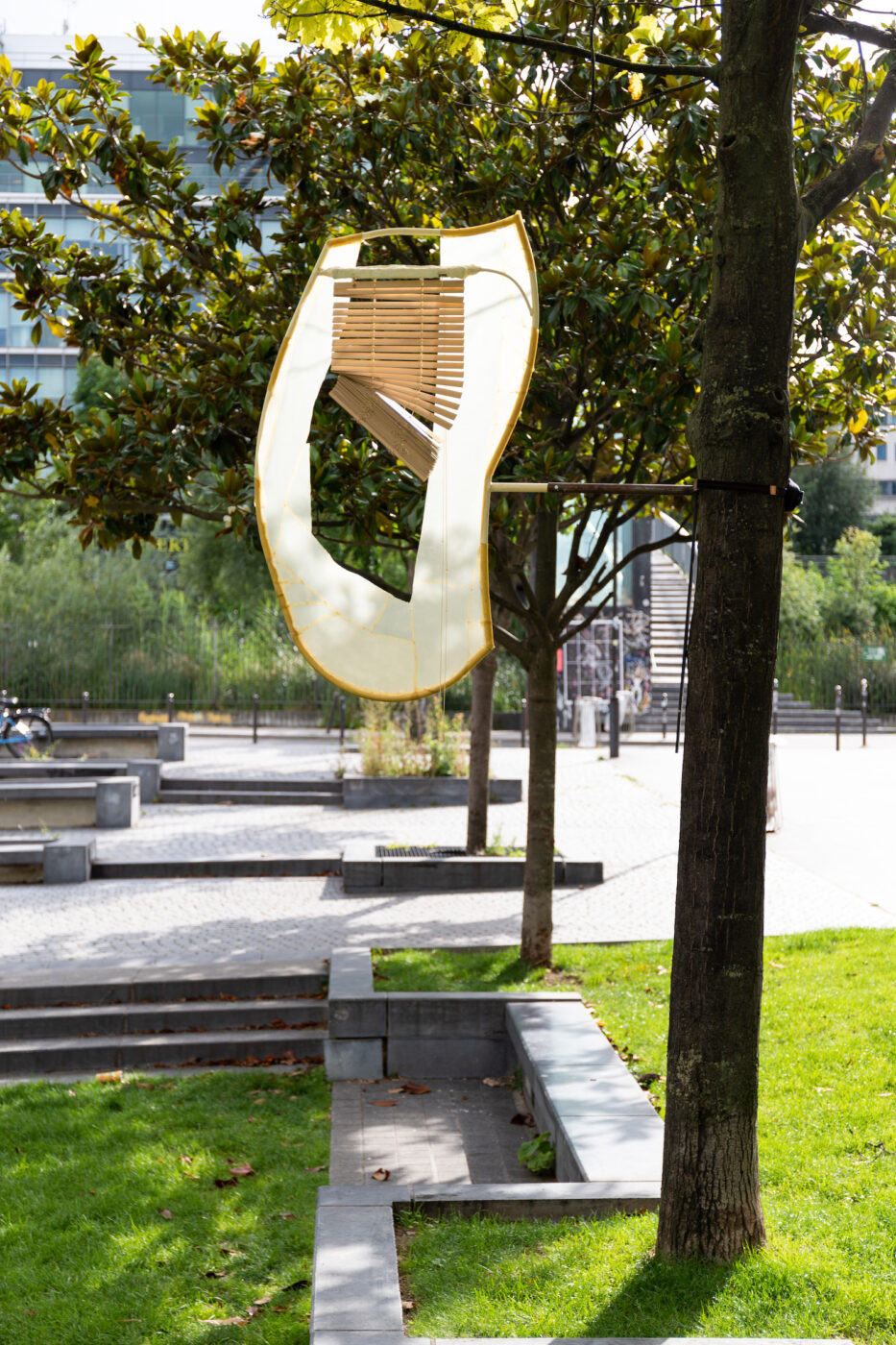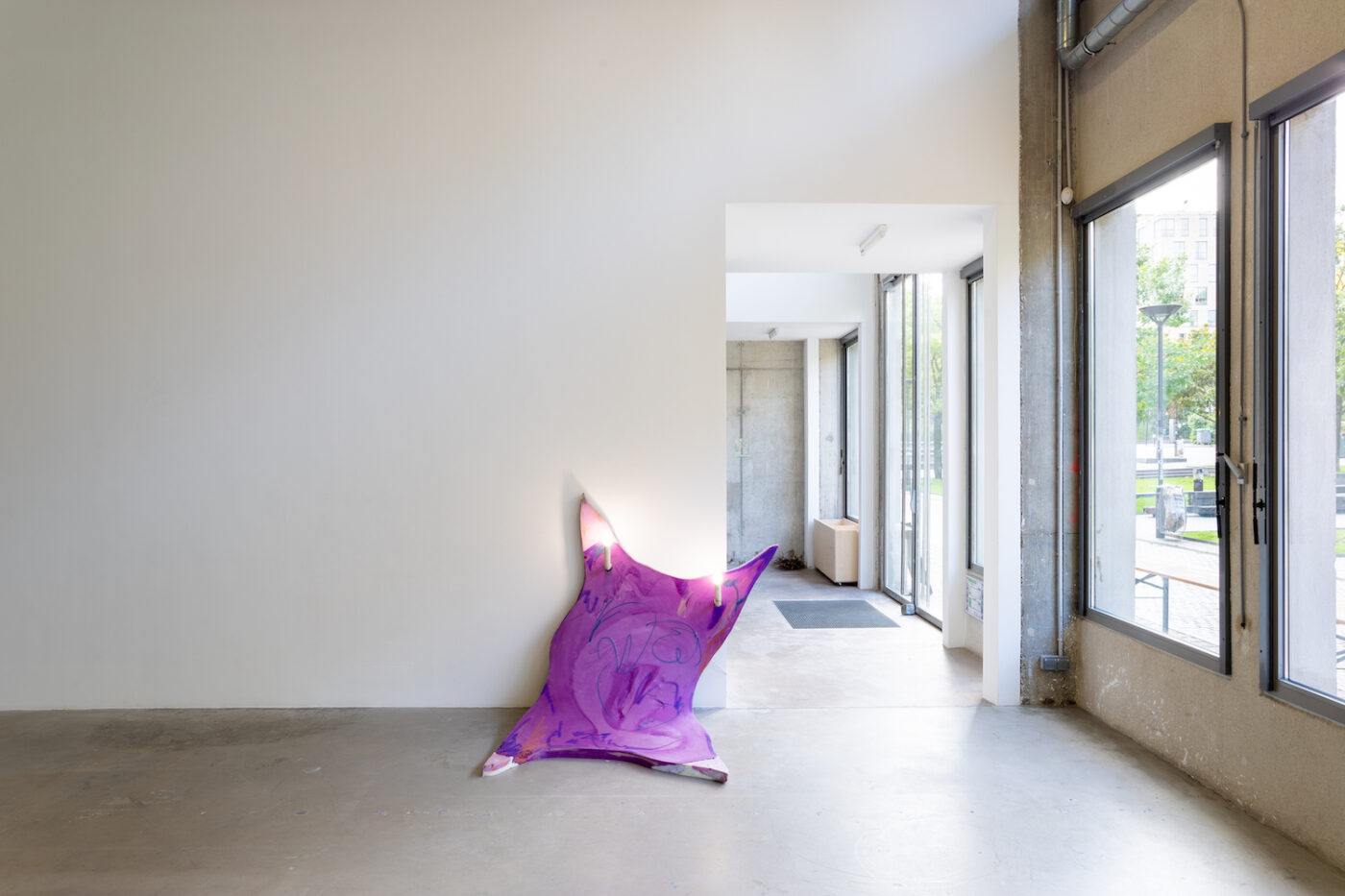
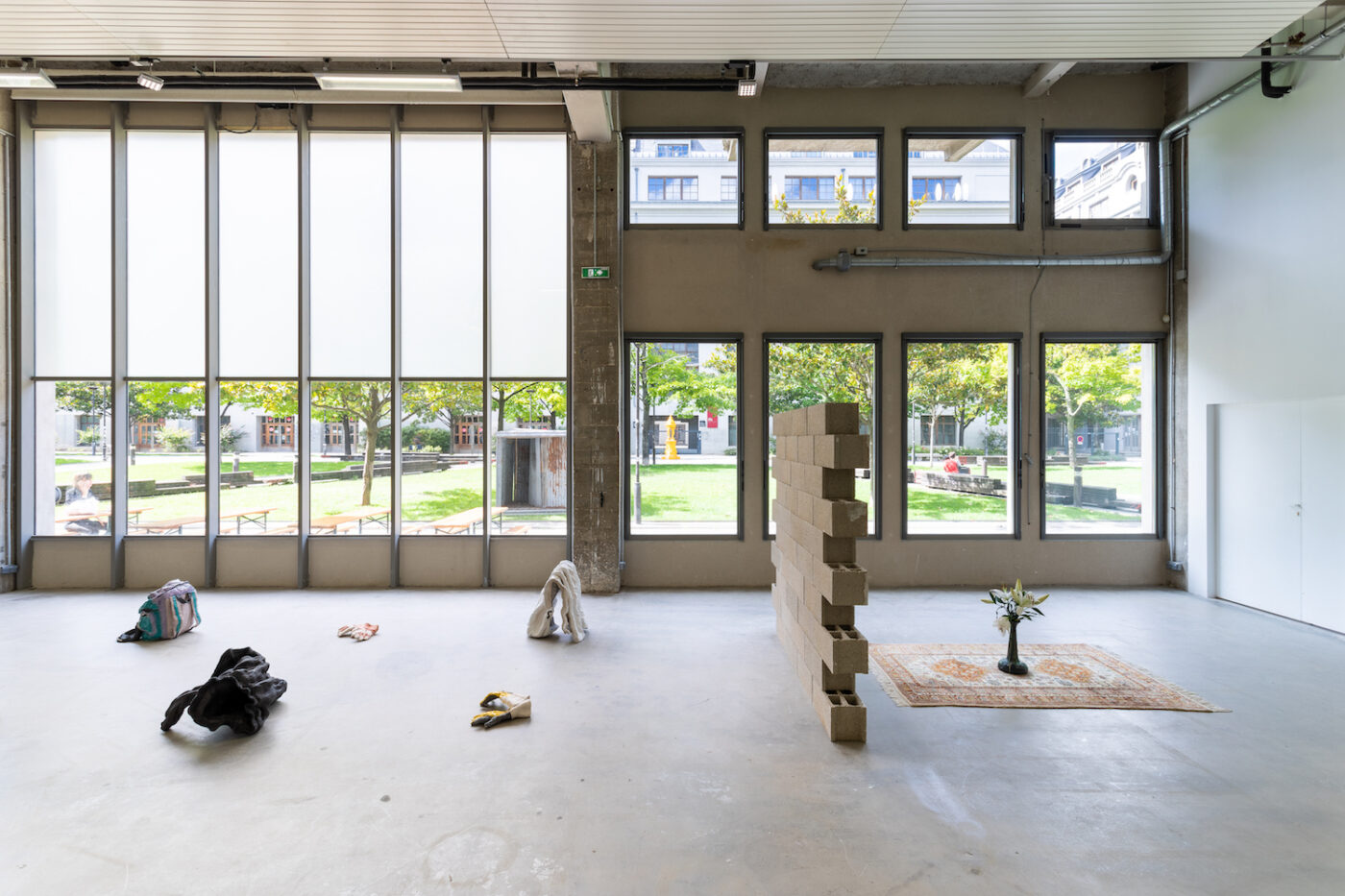
Des soleils encore verts
An exhibition in movement with Léonore Camus-Govoroff, Louis Chaumier, Jérôme Girard, Ninon Hivert, Konstantinos Kyriakopoulos, Maïa Lacoustille, Lucille Leger, Masha Silchenko, Chloé Vanderstraeten
« Des soleils encore verts¹ » is an exhibition in movement imagined by the Champs magnétiques collective, with work by nine recent graduates of the École nationale supérieure des Beaux-Arts and the École nationale supérieure des Arts Décoratifs. The title of the project, taken from a poem by Andrée Chedid, can be translated as Suns Still Green — it implies hope and new possibilities. The participating artists are united by a shared interest in what could be, whether in our world or in another. The exhibition offers potential forms of resistance, new spiritual horizons and alternative futures.
The exhibition is designed to adapt, transform and produce new forms of interaction with art. It makes use of short openings in the programming of its host venues, taking place in several acts with each occupation conceived as a fragment of a whole, growing out from previous iterations and anticipating what is yet to come. The exhibition initiates its own cartography as it takes root across multiple territories, allowing itself to be shaped by each venue.
The project’s first cycle unfolds in four spaces: Mains d’Œuvres, an independent venue that supports artist projects and citizens’ initiatives; CAC Brétigny, Contemporary Art Center of National Interest, whose structure, marked by the theories of popular education and co-creation, functions as a collective space, each participating actively in the construction and identity of the project; Bétonsalon, a centre for contemporary art and research whose collaborative approach invites the questioning of notions of hospitality and the commons; and finally DOC!, a space run by and for artists offering residence programmes and exhibitions. Settling in other institutions and artistic organisations remains a possibility for the future, the project potentially migrating indefinitely.
“Des soleils encore verts” questions our relationship to common spaces and refuges. These spaces can be places of comfort, of reconciliation with oneself and others, but also reminders of loss. Within these areas emerge endless possibilities of reinvention. The artists exhibiting at Bétonsalon offer temporary respite and spaces of hospitality. Masha Silchenkoand Léonore Camus-Govoroff reflect on the private and the domestic spheres, giving these environments a collective dimension of a safe space. Lucille Leger also uses these notions, qualifying her hybrid sculptures as living organisms that interact between interior and exterior spaces. Addressing the outdated compartmentalization of art, design and everyday objects, her works take the form of biomorphic furniture, disrupting our notion of the inanimate. Chloé Vanderstraeten dreams up cities in her technical drawings, developing imaginary architectures in which human activities occur, like “building”, “dreaming”, “playing” or “cultivating”. Such actions also materialize in the work of Ninon Hivert, who collects traces of human movement so as to display them in the exhibition space. A keen observer of everyday life, she uses ceramics to create clothing-sculptures from a photographic repertoire of found objects. She thus expresses the presence of bodies and past movements, fixed in time. In Konstantinos Kyriakopoulos’ work, the bed, a starting point for reflecting upon the common, can be transformed into a shelter, a bus stop or even a game table. Using it as a base, he creates structures which are made to host the work of another artist. The process is a moment of collaboration, a means of coexisting. For Louis Chaumier, what appears to be furniture is actually useless, their forms rather calling upon the need to reconfigure spaces for living together. As Jacques Derrida maintains in De l’hospitalité, the notion of hospitality presupposes a questioning of the frontier “between the familial and the non-familial, between the foreign and the nonforeign, the citizen and the non-citizen, but first of all between the private and the public²“. These shelters, where one may take cover, allow us to slow down and welcome others.
This first cycle of exhibitions develops upon fertile ground upon which emerge artistic, curatorial and editorial practices in perpetual evolution. Champs magnétiques seeks the possibility of being together, creating together. With vagrancy at the root of its project, Champs magnétiques has no set course, preferring impulse and disorientation.
¹ Andrée Chedid, Textes pour un poème suivi de Poèmes pour un texte 1949-1991, Paris, Poésie / Gallimard, 2020.
² Jacques Derrida, De l’hospitalité, Paris, Calmann-Lévy, 1997, p. 47.
Champs magnétiques
Champs magnétiques is a collective of young curators, students of the professional master’s degree “Contemporary art and its exhibition” at the Sorbonne Université. Its members are Elizabeth Allen, Sergi Álvarez Riosalido, Lucie Brechette, Lisa Colin, Maria Claudia Gamboa, Magdalena Gemra, Thomas Maestro, Lola Majzels, Violette Morisseau, Léa Pagnier, Marie Plagnol and Tom Rowell.
The exhibition « Des soleils encore verts » is supported by the Beaux-Arts de Paris, the École nationale supérieure des Arts Décoratifs (EnsAD, Paris), the Sorbonne Université, the CVEC-Crous of Paris and the City of Paris. The exhibition also benefits from an exceptional loan of films from the Collective Young Cinema and the usage of exhibitions spaces of Mains d’Oeuvres, CAC Brétigny, Bétonsalon, DOC! and Sorbonne Université.
7pm: Le ciel est bleu comme une brique, performance by Léonore Camus-Govoroff and Louis Chaumier
8pm: DJ set by Angela
